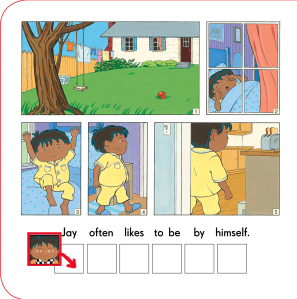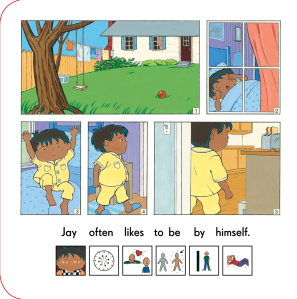
Books for Children with Autism
By Katharine Swanson
During Autism Awareness Month (and all year round), teachers and parents alike think about the importance of educating their child with autism in the most effective way. The most effective method of instruction varies from student to student and is as wide as the spectrum itself. However, one universal method revolves around written words being broken down into picture symbols to represent words and sentences.
In my experience in the classroom, students benefit from texts and questions being broken down into pictures to make them more visual and concrete. People with autism tend to think in visual, concrete ways. The added visual element enhances their comprehension of the material being presented to them. Therein lies the main benefit of a book like Jay and Ben. The story is simple and already broken down into manipulative picture symbols to help students of all levels comprehend. The picture symbols with the book are removable and can be manipulated as needed for different students.


I have found that the pictures provide an extra support for students learning to read through memorization and sight words. The pictures can then be rearranged and manipulated to create comprehension question choices to check for understanding. Jay and Ben’s use of functional skills brings the story to life: it not only allows kids to practice functional skills but also gets them to connect to a character in the story through mutual activities.
The better we can get at presenting material to students with autism, the more they will gain from school and education. It goes without saying that this will make for better prepared adults when they exit the school systems. The value of informational text and literature being presented in picture form to students with autism is paramount. For someone who thinks concretely and literally, seeing more abstract ideas represented with pictures enhances understanding. Jay and Ben is a simple effective tool that can be utilized in classrooms and homes in multiple ways. Visual tools are always going to be effective when educating students with autism, and it is our job as educators and parents to provide our children with the most effective tools available. Happy reading!
Contact Us
Telephone: (212) 779-4400 x 28
Email: quotes[at]leeandlow[dot]com
Educator's Newsletter: Subscribe
FREE Teacher's Guides
Helpful educator resources can be found at our Educators






